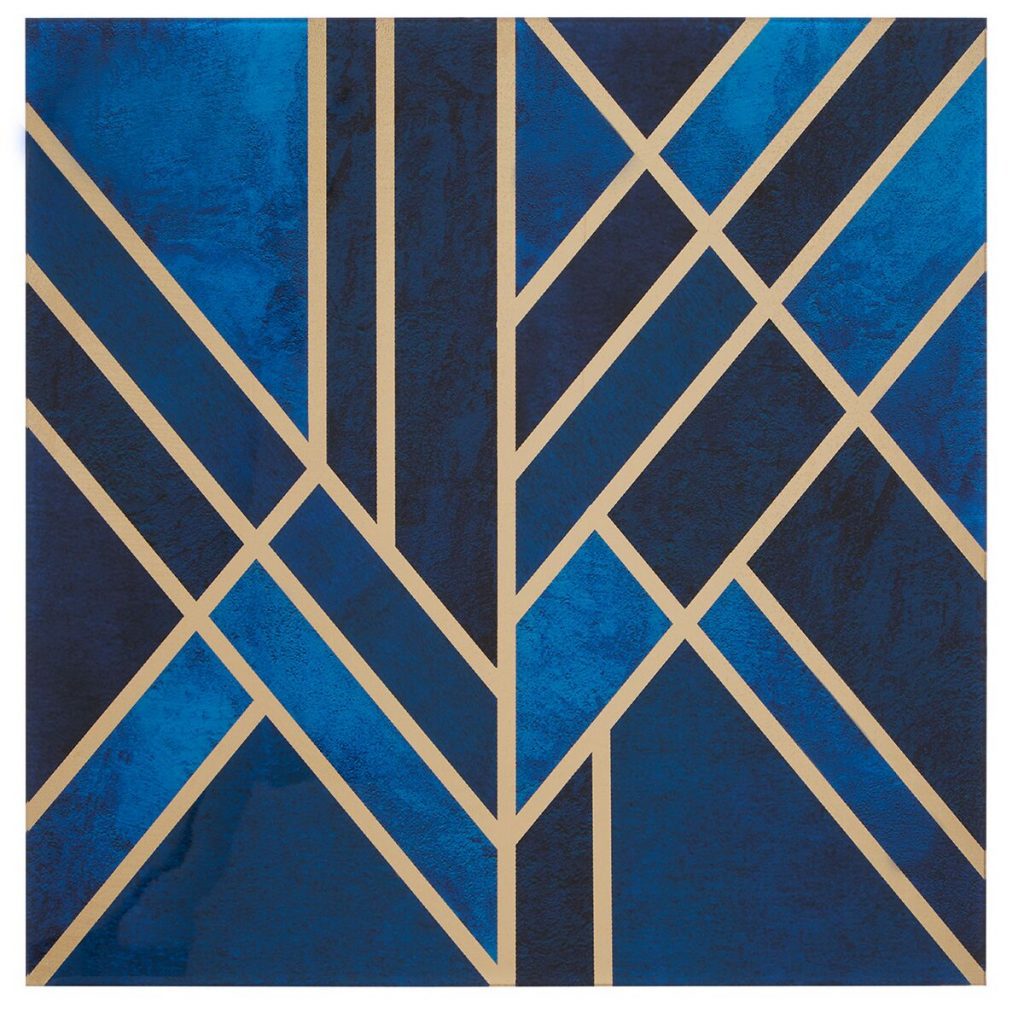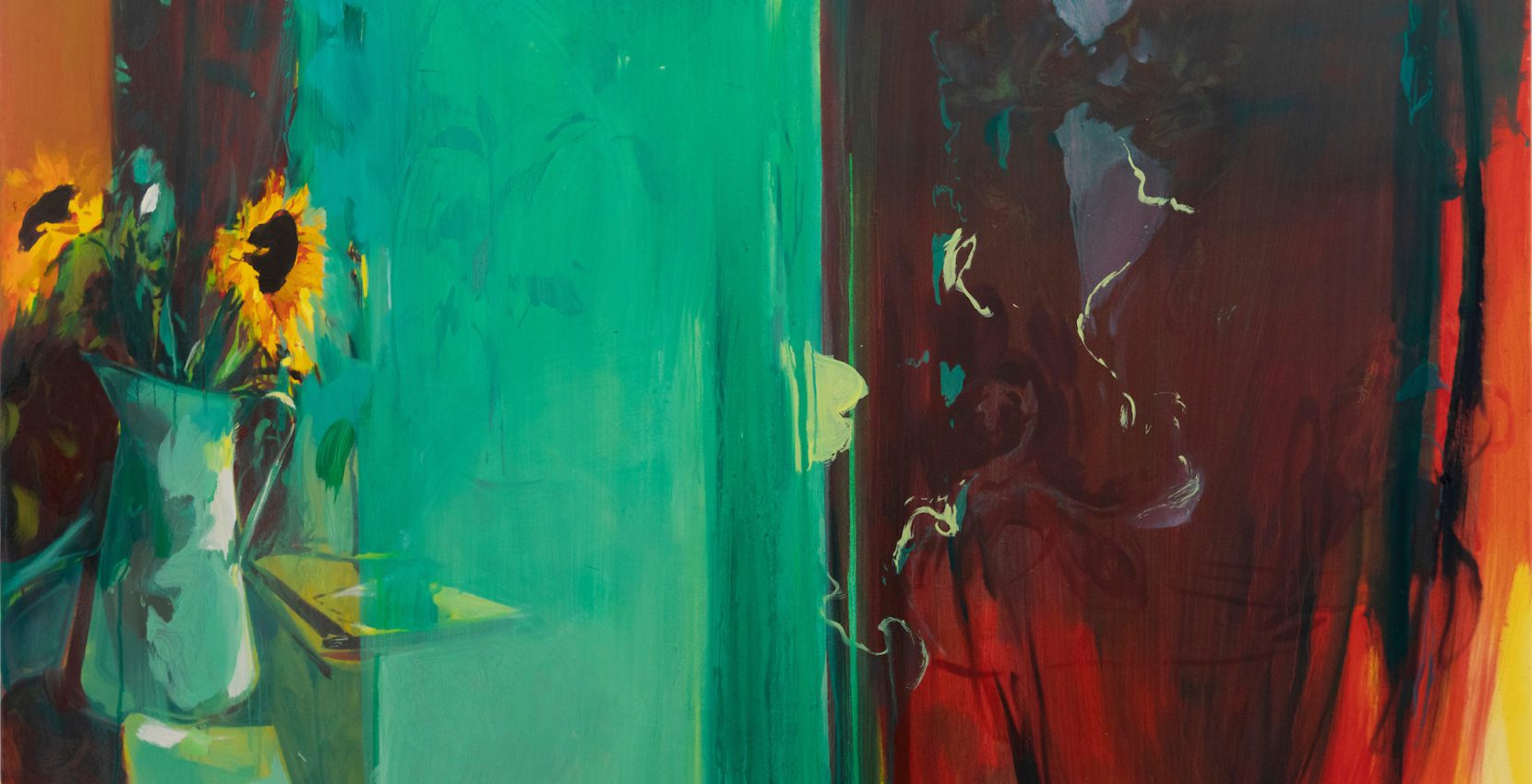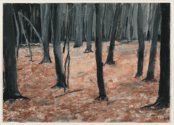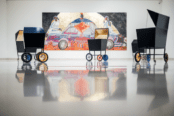What is real? What is imagined? Viewers to Eleanor May Watson’s Curtains Drawn at London’s Wilder Gallery are invited to look inwards and reflect on creating solitary spaces. Watson’s thought provoking work mingles collaging, emphasis of absences, fragmentary imagery and watercolour, to investigate layered experiences of time. As viewers engage with compositions, flitting between abstraction and realism, we ask what are the curtains we draw in our social bubbles? Are these assumptions inherited from our colonial past?
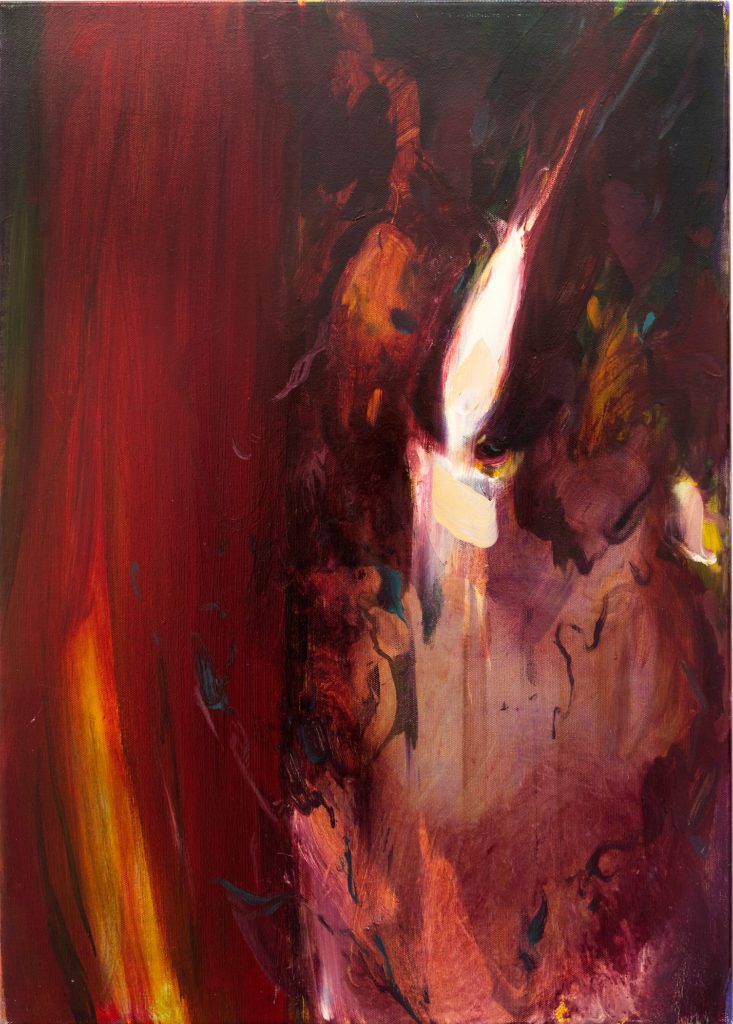
As we engage with the paintings at Wilder Gallery, flitting between abstraction and realism, amongst the beauty there is disquiet. Do we ‘draw the curtains’ to isolate ourselves and to match our own assumptions? Are these assumptions inherited from our colonial past?
“Eleanor plays with fragments, absence, collaging and veils. The artist uses images she has taken at moments of contentment in her life as starting points to explore the layered experience of time,” (Wilder Gallery 2022)
Receiving an MA in 2018 after graduating from Guilds of London Art School and Wimbledon College of Art, Watson uses oils on canvas or board creating work that sits between abstraction and figuration to create scenes which play with the idea of straight narrative. A similar work of hers shown at A Strange Kind of Knowing last month named Inside Silences Distant Noise (2019) where an artwork used facial recognition software on viewers’ phones to recognise the art as water. This ingenious play between familiar and unknow is an example of the abstract and realistic styles redolent of Watson’s work.
In Where Can I Send These Words That I Write? (2021), the piece elicits an contemplative aura powered by the moody atmosphere of deep dark shades, red and black where we are calmed yet unsettled, we feel the silences, and question the unease. The works are beautiful but there is an edge. The realistic candles and abstract background linked through matching colours allow the viewer to consider the candles placed at the front, almost as a statement against realism. Are they too an abstraction? Certainly, the background feels abstract giving the work a dreamlike quality. And maybe that’s the pivot? We are in the realms of dreams or imagined histories, thematically linked to the power of one’s own history to shape one’s perception. We often see only what we know.
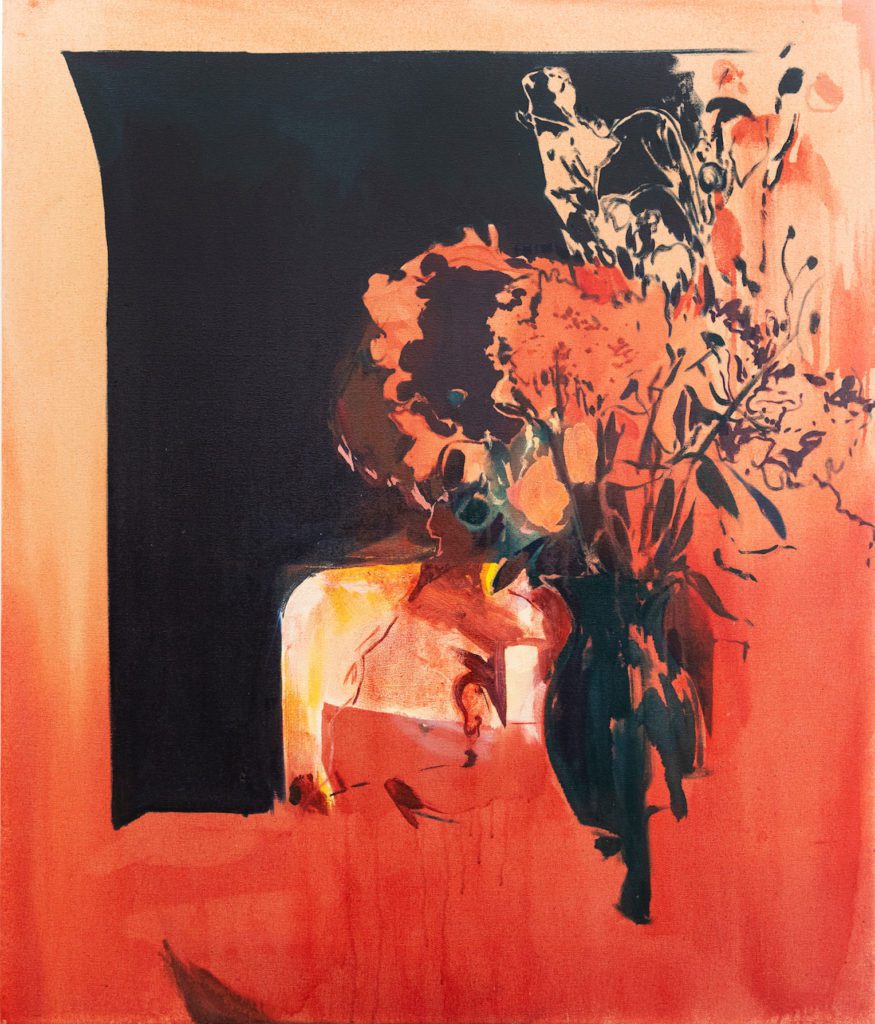
“I have always loved old things, and the play of light on surfaces covered in patina. I respond visually before language can touch it. I make things to work out what it is that I find alluring about them. I am usually both drawn in and a little repelled by my subjects: interested in paradox and simultaneity. For a long time my work has created circling conversations about heritage, nostalgia and the legacy of colonialism,” (Watson 2020)
As a viewer the nature of colonialism within Watson’s work is not obvious, one feels it exists as a field of dialogue rather than a conclusion. Perhaps she plays with ideas of nostalgia as an experience of time, it feels as though she’s commenting on how representative the human experience actually is. In Zeitgiebers (2021), the image of a wall perhaps from a family home, giving us feelings of familiarity and comfort but it follows an abstract thread, the compositions are made of uneven painted rectangular forms; the colours melding into brighter and darker shades of the primary hues. So while familiar, there are sign posts that all is not as it appears, or as we would suppose it to appear. A delightfully thorny position in her work is that if we are looking at ‘colonialism’ it doesn’t seem distasteful, but being an investigation of the rosy essentialism it feels that that is the ride she has created.
Similarly, when she paints a realistic vase and sunflower it is somehow reminiscent of the impressionist Édouard Manet’s The Monet Family in Their Garden at Argenteuil (1874). Rather than focusing on landscape and external objects, we are drawn towards themes of the personal, as though shutting out the world and escaping into intimate, private spaces.
“I’m interested in the value of art and the legacy of art history, but also in the colonial past. When you see a shipwreck painting, it provides a kind of escapism into a forgotten time when the world had pirates. But it’s a misplaced nostalgia. That was the beginning of globalisation, but also the slave trade. In the middle of that installation there was a very still interior. There was meant to be a dissonance between the very still, quiet interior and these loud, textured things next to them.” (Watson in Spicer 2021)

In Find a Boat and Sail in It (2021), where we are asked to find a boat, the viewer wonders about the relation between the scene, the painting’s construction, and the artist’s experience of a boat. The outline of a vegetative vessel can be seen in the centre. But is this the boat we are looking for? The painting has a noticeably different palette to the previous two works, its light greens popping on a backdrop of white. Green, symbolic of growth and life, with white, emblematic of purity and goodness, may suggest the boat is a new start, a new journey, that ‘we’re looking for’. This is furthered by the bowl of fruit that takes the centre of the piece, metamorphosing into the non linier foliage underneath, often associated with abundance, such as a successful harvest. The viewer is advised a fresh start would bring rewards. Of course, boats often have less sublime readings in many colonial histories.
Contrast this with the precise illustrations of low hanging jungle leaves meeting a candles’ glow at a right angled tip in the core of Where Can I Send These Words That I Write? The tender painting suggests a special significance of these objects to the artist, creating the impression of a private, intimate space. A yellow and red rectangle sits in the centre, which seems to be a candle, though its flame is obscured by a slightly off balanced vase of flowers, the imagery suggesting a disturbed relationship, perhaps romantic or filial. This is echoed in the title of the works supposing a person wishing to convey their feelings, perhaps our appreciations of these poignant images, to someone absent, perhaps even someone now a stranger through distance or time.
“I am learning to be more porous, to allow for meanings and interpretations of what I make to emerge naturally, as well as taking inspiration more eclectically,” (Watson 2020)
Revisiting the exhibition’s theme of drawing curtains and nostalgia we are shown Watson’s own cognitive processes. The artwork’s oiled coats are truly alluring, yet not prescriptive of beauty, as the art doesn’t depict exact reality. The external beauty of person, place or identity is put up for scrutiny, but the viewer often is left unhinged amongst the sumptuous washes of colour and familiar items on show. In this way we led to consider the gaps in knowledge and experience that surround us in what we know of the past and through which we interpret the present. Within history our feelings and memories paint the gaps between fact and effect, and Watson’s work demonstrates this process in an evocative and symbolic manner.
Info: Curtains Drawn will be held on 12th January – 4th February at Wilder Gallery, 77 College Road, London NW10 5ES
References:
Smith, N. 2020. ‘Eleanor May Watson’ in Renli Su. [Online]. [10 February 2022]. Available from: Eleanor May Watson
Spicer, E., 2022. Eleanor May Watson – interview: ‘Home is a sanctuary, but also a really complicated space for most people’. [online] Studiointernational.com. Available at: <https://www.studiointernational.com/index.php/eleanor-may-watson-interview-home-is-a-sanctuary-but-also-complicated-space> [Accessed 17 February 2022].
Featured Image: Eleanor May Watson, Zeitgiebers, 2021
